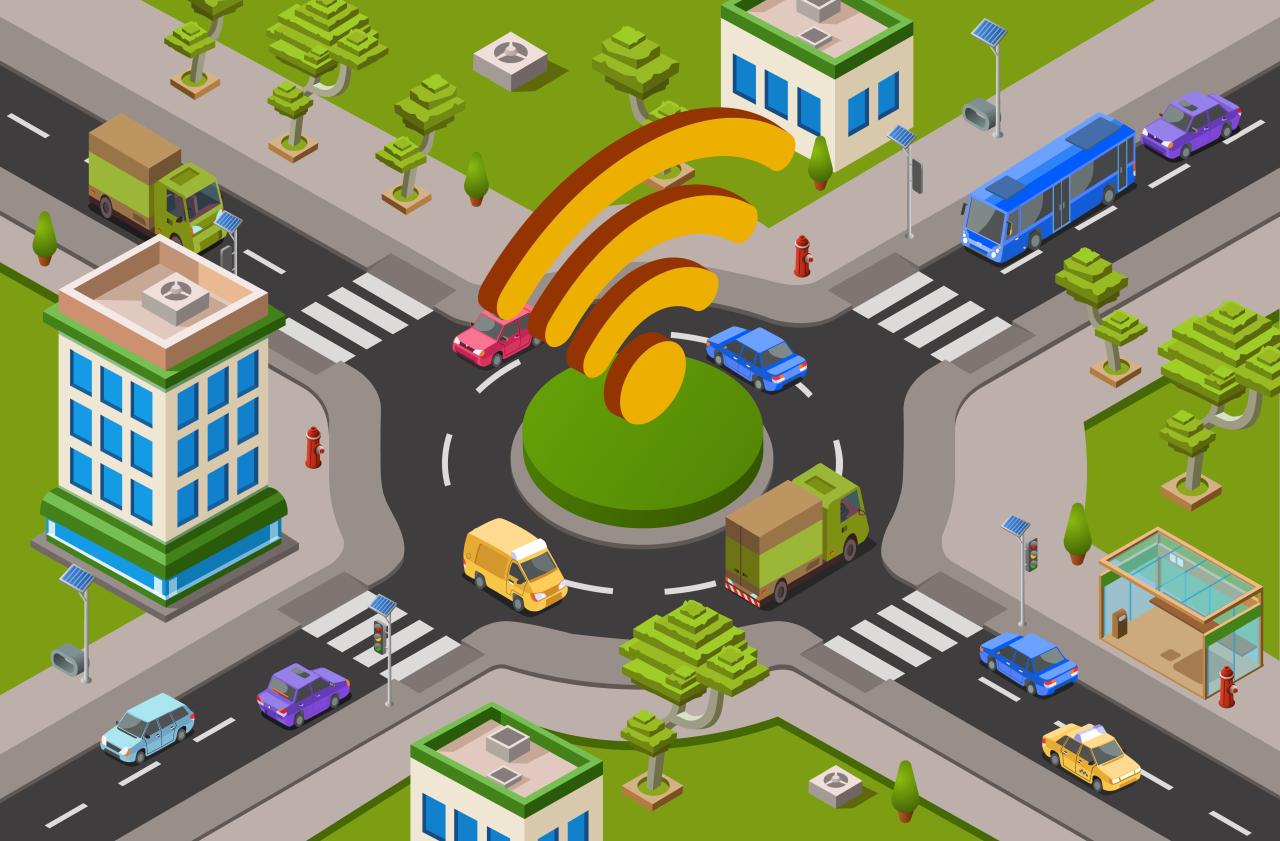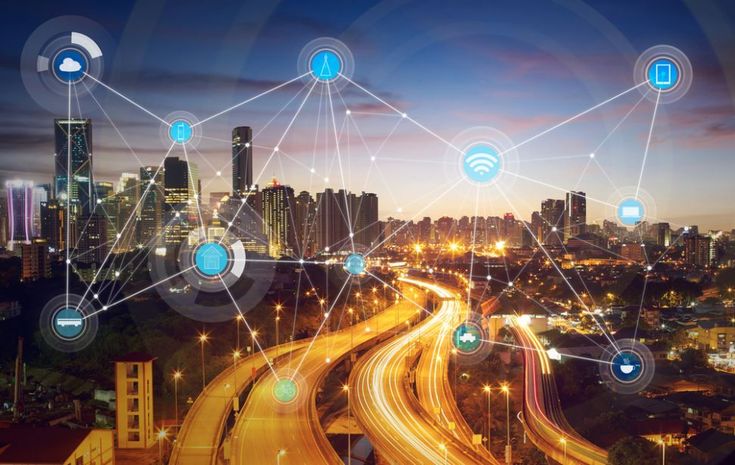The term “Smart Digital City Innovations” has become a popular topic in recent years, especially as more governments, businesses, and citizens worldwide embrace cutting-edge technologies. The concept revolves around integrating data, information, and technology to transform urban living environments into more sustainable, efficient, and responsive spaces. Rather than merely employing digital solutions, a truly smart city orchestrates those solutions to create an interconnected ecosystem. This expansive guide will delve into the core elements of modern smart cities, explore the driving forces behind their emergence, and illustrate how they reshape essential urban features like transportation, infrastructure, healthcare, public safety, and more. By understanding these critical components, societies can better prepare for a future where advanced technology plays a central role in daily life, driving economic growth and enhancing overall quality of life.
In this article, we will discuss: A. Defining Smart Digital Cities
B. Key Components of a Smart City Ecosystem
C. Importance of Connectivity and Data
D. Role of Government Policies and Private Partnerships
E. Impacts on Transportation and Mobility
F. Environmental Considerations and Sustainability
G. Education and Workforce Readiness
H. Healthcare and Public Safety Enhancements
I. Potential Challenges and the Road Ahead
Through these detailed sections, we aim to highlight what makes a digital city “smart” and the path forward for communities that wish to transform themselves using innovative tools. Each facet of urban life—whether it’s citizen engagement, data analysis, or connected infrastructure—plays a pivotal part in the smart city framework. By grasping these concepts, policymakers, technology developers, and citizens can forge effective partnerships to fully embrace the smart city revolution.
A. Defining Smart Digital Cities
A smart digital city can be described as an urban area that actively leverages technology, data analytics, and connectivity to improve various aspects of life. This encompasses social, economic, and environmental domains. While different cities might have different focuses and priorities, what unites them under the banner of “smart” is the emphasis on data-driven decision-making and resource optimization.
1. Technological Integration
Smart digital cities blend sensors, software, analytics, and networks into the fabric of urban environments. From smart traffic lights that adapt in real-time to changing conditions, to connected public services like digital healthcare and e-governance platforms, technology is a unifying force. This integration extends beyond municipal operations to encompass public services, businesses, and even citizens themselves.
2. Data-Driven Decision Making
Data generation and analysis power the intelligence of these cities. Sensors capture data related to traffic flow, pollution levels, energy consumption, and other variables. Algorithms then interpret this information to identify trends, predict future scenarios, and suggest optimal solutions. This system enhances everything from public safety strategies to infrastructure investments.
3. Emphasis on Sustainability
Smart digital cities also focus on sustainable practices. Renewable energy, green architecture, and low-emission transportation systems all play a role. By employing smart grids and energy-efficient infrastructure, cities reduce both their environmental impact and operational costs.
4. Community Involvement
An additional element that defines a smart digital city is the active involvement of community members. Technology is not only introduced for government use but also to empower citizens. Through digital platforms, individuals can register complaints, report issues, contribute feedback, or even co-create solutions with local authorities. This level of public participation fosters transparency, accountability, and trust.
B. Key Components of a Smart City Ecosystem
Though every smart city might prioritize different factors, several core components typically define how these urban areas function. These building blocks ensure that cities can collect, process, and act on data effectively.
1. Internet of Things (IoT) and Sensors
IoT devices form the backbone of a smart digital city. These devices range from simple sensors measuring temperature or air quality to complex systems tracking water distribution or traffic patterns. By installing sensors in strategic locations, the city’s management can monitor real-time data and respond to changing needs quickly.
2. High-Speed Connectivity
Reliable, high-speed internet connections—such as fiber-optic broadband or 5G networks—allow for large-scale data transmissions between IoT devices, control centers, and users. Without robust connectivity, the massive data sets generated by IoT devices could not be effectively analyzed and acted upon.
3. Cloud Computing Infrastructure
A well-designed cloud computing framework is integral for storing, processing, and analyzing huge volumes of data. Cloud platforms provide the scalability needed to accommodate growing data demands and the computing power to run sophisticated artificial intelligence (AI) models.
4. AI and Machine Learning
AI-driven analytics help manage and interpret the massive amount of information flowing into city data centers. Machine learning systems can detect patterns in traffic congestion, forecast electricity usage, or anticipate maintenance for infrastructure like roads and bridges.
5. Cybersecurity
As more critical functions are digitized, cybersecurity becomes paramount. Protecting sensitive data and maintaining public trust demand strong measures against hacking, data breaches, and other forms of cyber threats. Successful smart cities invest in robust cybersecurity strategies and train personnel to implement best practices.
6. Platform for Citizen Engagement
Online portals, mobile applications, and interactive websites serve as pathways for residents to communicate with city officials, access municipal services, and share feedback. A well-developed citizen engagement platform fosters collaboration, ensuring that policies align with the public’s needs.

C. Importance of Connectivity and Data
1. Real-Time Monitoring
One of the most profound benefits of a smart digital city is the ability to monitor urban processes in real time. Traffic cameras, environmental sensors, and public service indicators stream data to central control rooms, enabling swift intervention when problems arise. For instance, a sudden spike in air pollution might prompt city officials to temporarily reroute heavy vehicles away from residential areas.
2. Predictive Analytics
The data collected doesn’t merely support short-term actions; it also serves long-term strategic planning. By deploying machine learning algorithms, city managers can forecast consumption patterns, identify infrastructure vulnerabilities, and plan expansions more efficiently. This proactive approach helps cities handle population growth, economic fluctuations, and unforeseen disruptions.
3. Enhancing Public Services
Connectivity and data pave the way for more streamlined public services. Consider a scenario in which trash bins are equipped with sensors to signal when they’re full. This info triggers an optimized collection route for sanitation vehicles, saving fuel and reducing labor costs. In the healthcare domain, data-based platforms can enable remote patient monitoring, reducing the burden on hospitals while improving care access for rural or vulnerable populations.
4. Data Sharing and Collaboration
Connectivity extends beyond city limits, too. When regions share data, they can coordinate responses to broader challenges—like air pollution, disease outbreaks, or regional transit. Collaborative efforts among neighboring cities or national governments multiply the benefits of connected infrastructure, cultivating comprehensive solutions to systemic problems.
D. Role of Government Policies and Private Partnerships
1. Policy Frameworks and Regulations
Government policies serve as a vital foundation for fostering smart city growth. Regulations impact data governance, security standards, energy management, and infrastructure development. When city leaders establish clear guidelines and incentives for businesses, startups, and researchers, collaboration flourishes.
2. Funding Mechanisms
Smart city projects require significant financial resources, whether for sensor deployment, development of software solutions, or infrastructure upgrades. Funding can arise from local governments, national programs, public-private partnerships, or international organizations. Effective financing plans balance the need for innovation with budgetary constraints, ensuring that projects remain both feasible and impactful.
3. Public-Private Collaboration
Private companies often provide specialized expertise in areas such as IoT, AI, and data analytics. These firms can design and implement the technological solutions that underpin a smart city. Meanwhile, government bodies supply oversight, direction, and public funding. This synergy accelerates innovation, allowing the city to adopt advanced solutions while maintaining regulatory control.
4. Inclusion and Accessibility
Government policies must also ensure that smart city initiatives do not leave any community segment behind. This includes bridging digital divides—offering affordable internet access, technology training, and inclusive designs that cater to people with disabilities, seniors, and those in lower-income brackets.
E. Impacts on Transportation and Mobility
A significant area where smart digital city innovations are highly visible is transportation. Rapid urbanization demands new mobility solutions to ease congestion, lower emissions, and promote public safety. By integrating technology into transport systems, smart cities address these challenges with greater precision.
1. Intelligent Traffic Management
Smart traffic lights powered by AI analyze real-time traffic data and adjust signal timings accordingly. This change reduces idle time at intersections, leading to less congestion and fewer emissions. In addition, adaptive traffic systems can grant priority to emergency vehicles, expediting their journeys to critical locations.
2. Real-Time Public Transit Updates
Public transit apps and digital signage inform commuters about bus or train arrival times, changes in routes, or delays. These features help residents plan trips more efficiently and encourage increased adoption of public transportation. Lower reliance on private cars can consequently mitigate traffic woes and reduce pollution.
3. Shared Mobility Solutions
Car-sharing and bike-sharing platforms operate more effectively in a connected city. Sensors installed on e-bikes or shared cars feed data into a central system, allowing city planners to identify usage trends. By analyzing this information, they can deploy vehicles to the areas where demand is highest, optimize docking station locations, and design policies that encourage shared mobility over private car ownership.
4. Autonomous Vehicles
Although fully autonomous vehicles are still under development, many smart cities are already preparing roads, traffic signs, and communications infrastructure to accommodate them. Testing in controlled pilot programs reveals how driverless cars integrate with current traffic systems, setting the stage for widespread adoption once the technology matures.
F. Environmental Considerations and Sustainability
Sustainability is a crucial element in smart digital city strategies. As climate change and resource depletion intensify, urban centers must adopt eco-friendly policies.
1. Efficient Energy Management
Smart grids allow for real-time monitoring of energy usage and distribution, enabling electricity providers to adjust supply based on demand patterns. This dynamic approach reduces both waste and operational expenses. Energy efficiency measures—like lighting controls for public spaces—further cut power consumption.
2. Renewable Energy Solutions
Cities can integrate renewable energy resources such as solar panels, wind turbines, or geothermal systems into their grids. By blending these sources with battery storage solutions, they can reduce dependence on fossil fuels, lower carbon footprints, and create stable energy supplies in the face of fluctuating demands.
3. Waste Management Innovations
High-tech trash collection, recycling programs, and waste-to-energy plants all align with the sustainability goals of smart digital cities. Placing sensors on garbage bins, for example, ensures that collection trucks only visit when they’re full, trimming down fuel consumption.
4. Reducing Air Pollution
Monitoring air quality in real time helps to identify pollution hot spots. Policymakers can respond rapidly—perhaps by restricting traffic in those areas or providing incentives for green vehicles. Over time, data collected from these sensors guide broader clean air strategies, making neighborhoods healthier and more pleasant.
G. Education and Workforce Readiness
1. Preparing Future Generations
For a city to fully realize its potential as a smart digital hub, it must nurture a workforce adept at using and improving technological innovations. Schools and universities often partner with local governments to implement updated curricula that teach data science, coding, AI, and design thinking. Introducing these subjects in early education fosters a tech-savvy citizenry.
2. Adult Education and Retraining
Technological advancements can displace certain jobs while creating new opportunities. Governments and academic institutions must therefore provide ongoing training to adults. Programs aimed at upskilling or reskilling the workforce ensure that current employees can handle emerging tools and stay relevant in evolving job markets.
3. Digital Literacy Initiatives
Widespread digital literacy is critical for a city to function smoothly in the modern era. Initiatives that offer free or subsidized internet access, computer classes, or community tech centers empower citizens who might otherwise fall behind. Through these efforts, smart city innovations become more inclusive and impactful.
4. Research and Innovation Hubs
Many cities invest in research parks, startup incubators, and innovation hubs to cultivate a culture of experimentation. Collaboration among educational institutions, private enterprises, and the public sector bolsters local economies and helps attract both domestic and international talent.

H. Healthcare and Public Safety Enhancements
1. Telemedicine and Remote Care
Healthcare services benefit enormously from smart digital city technologies. Telemedicine platforms enable doctors to examine and treat patients virtually, cutting travel time and easing pressure on crowded hospitals. Wearable devices can track patients’ vital signs in real time, alerting healthcare professionals of emergencies before they escalate.
2. Emergency Response Systems
Advanced surveillance, AI-driven analytics, and location-tracking solutions unite to streamline emergency response. For example, AI can automatically detect unusual patterns on CCTV feeds—like accidents or gatherings that might lead to social disturbances—and alert authorities. Rapidly sharing these details improves response times, potentially saving lives.
3. Public Health Monitoring
Cities with integrated data systems can observe disease outbreaks or public health trends early. Such knowledge is essential for timely interventions—like vaccination campaigns, quarantine measures, or public awareness campaigns. Collaboration between medical institutions, research labs, and municipal departments significantly improves a city’s overall health resilience.
4. Community-Oriented Policing
Digital platforms also facilitate better relationships between law enforcement agencies and residents. Citizens can quickly report crimes, suspicious activities, or community needs via secure apps. Police departments, in turn, can use data analytics to deploy resources where they’re needed most, improving efficiency and public trust.
I. Potential Challenges and the Road Ahead
1. Privacy and Data Protection
As cities collect vast amounts of data, concerns about privacy and surveillance inevitably arise. Striking the right balance between innovation and citizen rights is critical. Governments must institute transparent data policies, with clear guidelines on usage, retention, and sharing, to maintain public confidence.
2. Digital Divide
Not all residents have equal access to high-speed internet or the latest digital tools. Without targeted interventions, certain populations risk being left behind. Policymakers must invest in programs that expand connectivity, offer affordable devices, and provide training to ensure equitable participation in the smart city landscape.
3. Cybersecurity Risks
Smart digital cities rely heavily on interconnected systems. If one part of the network is compromised, it can potentially affect others. Robust cybersecurity measures—including encryption, multi-factor authentication, and regular system audits—are indispensable. Collaborations with tech companies, security experts, and academic researchers can bolster these defenses.
4. Funding and Long-Term Sustainability
Even with the best intentions, some cities struggle to finance large-scale smart projects. Funding constraints might force trade-offs between immediate needs and long-term benefits. Government officials must design well-considered strategies that ensure the longevity of these initiatives without compromising other critical services.
5. Evolving Technology
The pace of technological evolution can outstrip a city’s ability to adapt. Hardware and software deployed today may be obsolete in just a few years. Continuous assessment, along with modular and flexible approaches to infrastructure, is necessary to keep cities at the cutting edge.
6. Public Participation and Acceptance
Ultimately, a city can only be as smart as its residents allow it to be. If citizens do not trust or understand new technologies, they may resist adoption. Transparent communication, education campaigns, and inclusive design processes can bridge the gap between innovation and public acceptance.
Conclusion
Smart digital city innovations are transforming how metropolitan areas function by harnessing technology, data, and collaboration. From implementing AI-driven traffic management systems to setting up telemedicine platforms for remote healthcare, these cities are at the forefront of modernization. Connectivity stands at the heart of it all, enabling real-time data transfer, predictive analytics, and faster decision-making.
Success in building a smart digital city hinges on several key factors: A. Comprehensive IoT and sensor networks that feed data into well-managed platforms
B. Robust connectivity solutions such as high-speed internet and 5G networks
C. Data-driven platforms equipped with AI and machine learning capabilities
D. Effective government policies, regulatory frameworks, and public-private partnerships
E. Meaningful citizen engagement channels to encourage transparency and trust
While challenges remain—ranging from ensuring data privacy to keeping technology up to date—forward-looking cities are steadily forging ahead. Policymakers are creating regulations that foster innovation, businesses are offering technological expertise, and educational institutions are preparing a new generation of tech-savvy citizens.
In the end, smart digital city innovations represent more than merely installing cutting-edge devices or systems; they signify a long-term pledge to make urban life more efficient, inclusive, and sustainable. By carefully planning and tailoring technological solutions to unique local needs, cities around the globe can pave the way to better living standards and enduring economic prosperity. Whether it’s improved public safety, reduced pollution, or more dynamic local economies, the rewards of adopting a smart city model are extensive. As these efforts continue to evolve, we can look forward to a future where connectivity and collaboration unlock new possibilities for urban communities worldwide.












